Climate & Environment
 Low-cost “tree Fitbits” can pinpoint the precise timing of tree activities, like spring bloom or autumn leaf change, and more, according to a new CU Boulder study.
Low-cost “tree Fitbits” can pinpoint the precise timing of tree activities, like spring bloom or autumn leaf change, and more, according to a new CU Boulder study. The two lawmakers discussed shared motivations, opportunities for consensus-building and how to reduce political polarization around climate change to an audience of more than 150 people.
The two lawmakers discussed shared motivations, opportunities for consensus-building and how to reduce political polarization around climate change to an audience of more than 150 people.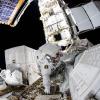 The new standard, endorsed by the international Committee on Earth Observation Satellites, will reduce uncertainty in global climate models and many more Earth Science applications.
The new standard, endorsed by the international Committee on Earth Observation Satellites, will reduce uncertainty in global climate models and many more Earth Science applications.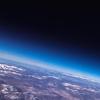 In celebration of our amazing planet, for Earth Week we’re featuring 10 ways LASP contributes to crucial Earth and climate science research.
In celebration of our amazing planet, for Earth Week we’re featuring 10 ways LASP contributes to crucial Earth and climate science research.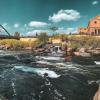 CU Boulder Today spoke with Mark Squillace of Colorado Law about the 50th anniversary of the Clean Water Act, and what the present and future may hold for water quality in the United States.
CU Boulder Today spoke with Mark Squillace of Colorado Law about the 50th anniversary of the Clean Water Act, and what the present and future may hold for water quality in the United States.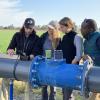 The new Climate Innovation Collaboratory based at CU Boulder will drive critical research and application of climate solutions for government agencies.
The new Climate Innovation Collaboratory based at CU Boulder will drive critical research and application of climate solutions for government agencies. In an increasingly polarized nation, cooperation across party lines is key to sustained climate mitigation in the United States, according to a new CIRES study.
In an increasingly polarized nation, cooperation across party lines is key to sustained climate mitigation in the United States, according to a new CIRES study.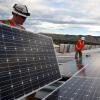 A new assessment from the Intergovernmental Panel on Climate Change brings a dire warning, but also good news: We currently have the tools necessary to mitigate climate change, and they’re cheaper than ever before.
A new assessment from the Intergovernmental Panel on Climate Change brings a dire warning, but also good news: We currently have the tools necessary to mitigate climate change, and they’re cheaper than ever before.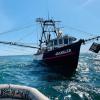 A CU Boulder study shows how compromise and communication can set more realistic expectations for fisheries, farms and beyond.
A CU Boulder study shows how compromise and communication can set more realistic expectations for fisheries, farms and beyond.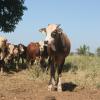 Customized assistance helped Brazilian cattle ranchers sustainably increase their cattle production while keeping carbon in the ground, according to a new study.
Customized assistance helped Brazilian cattle ranchers sustainably increase their cattle production while keeping carbon in the ground, according to a new study.


